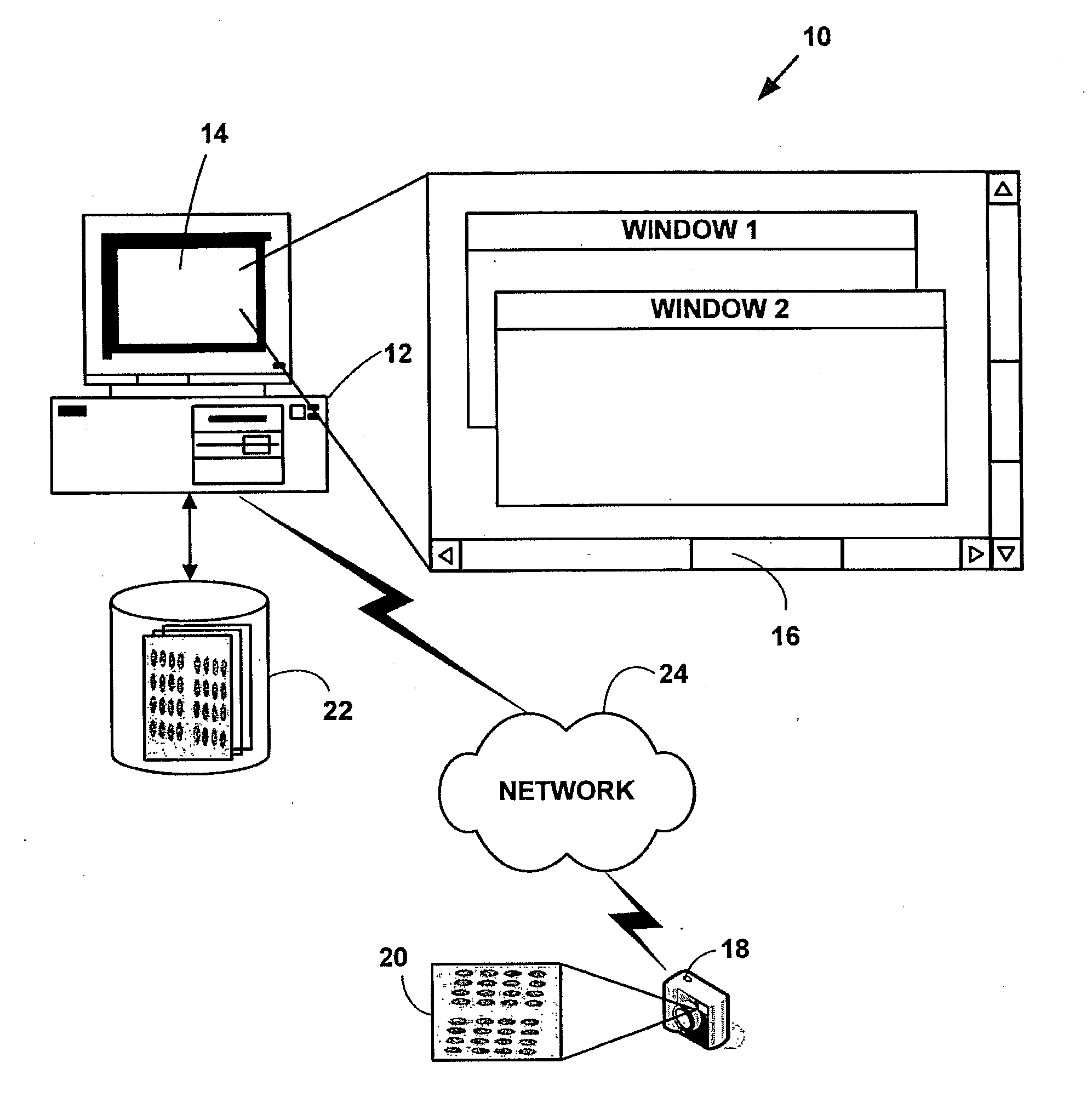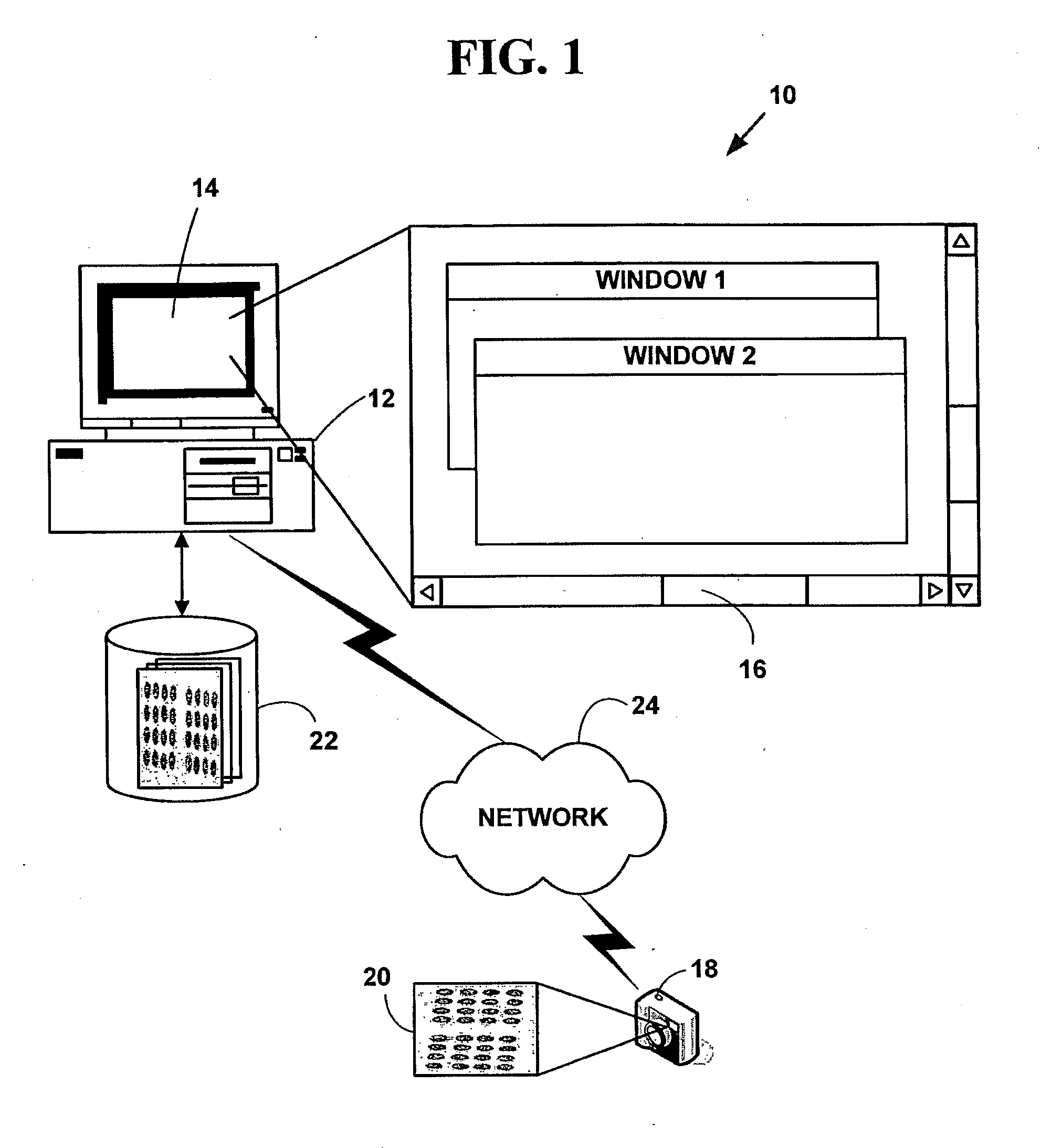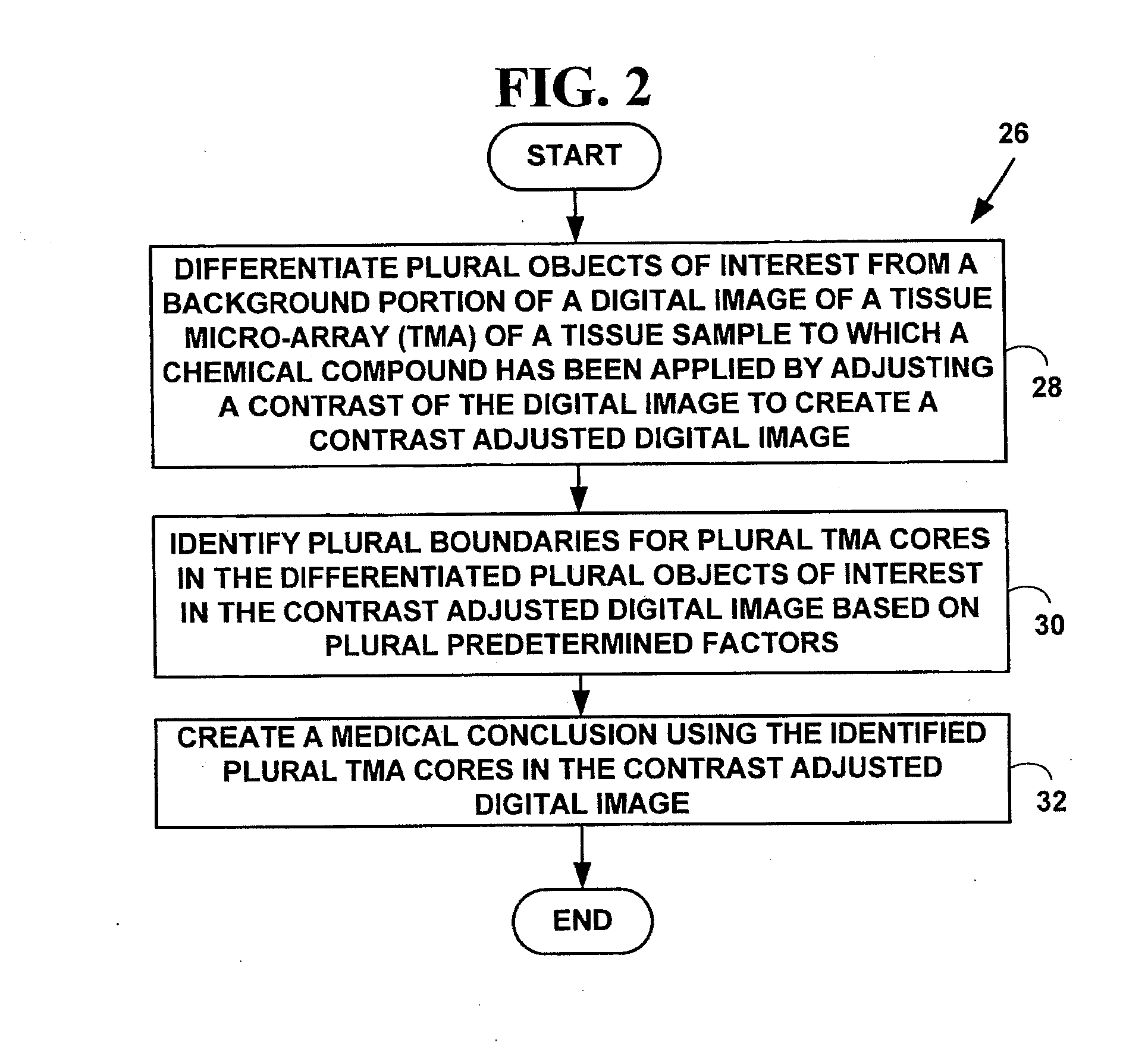Method for automated processing of digital images of tissue micro-arrays (TMA)
a tissue microarray and digital image technology, applied in the field of digital image processing, can solve the problems of affecting the accuracy of tissue microarray image analysis, so as to improve the accuracy of digital image analysis
- Summary
- Abstract
- Description
- Claims
- Application Information
AI Technical Summary
Benefits of technology
Problems solved by technology
Method used
Image
Examples
Embodiment Construction
Exemplary Automated Biological Sample Analysis System
[0040]FIG. 1 is a block diagram illustrating an exemplary automated biological sample processing system 10. The exemplary system 10 includes one or more computers 12 with a computer display 14 (one of which is illustrated). The computer display 14 presents a windowed graphical user interface (“GUI”) 16 with multiple windows to a user. The system 10 may optionally include a microscope or other magnifying device (not illustrated in FIG. 1). The system 10 further includes a digital camera 18 (or analog camera) used to provide plural digital images 20 in various digital images or digital data formats. One or more databases 22 (one or which is illustrated) include biological sample information in various digital images or digital data formats. The databases 22 may be integral to a memory system on the computer 12 or in secondary storage such as a hard disk, floppy disk, optical disk, or other non-volatile mass storage devices. The comp...
PUM
 Login to View More
Login to View More Abstract
Description
Claims
Application Information
 Login to View More
Login to View More - R&D
- Intellectual Property
- Life Sciences
- Materials
- Tech Scout
- Unparalleled Data Quality
- Higher Quality Content
- 60% Fewer Hallucinations
Browse by: Latest US Patents, China's latest patents, Technical Efficacy Thesaurus, Application Domain, Technology Topic, Popular Technical Reports.
© 2025 PatSnap. All rights reserved.Legal|Privacy policy|Modern Slavery Act Transparency Statement|Sitemap|About US| Contact US: help@patsnap.com



